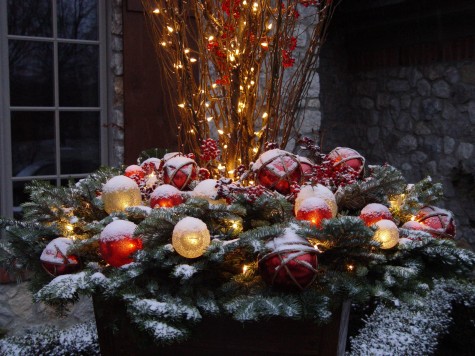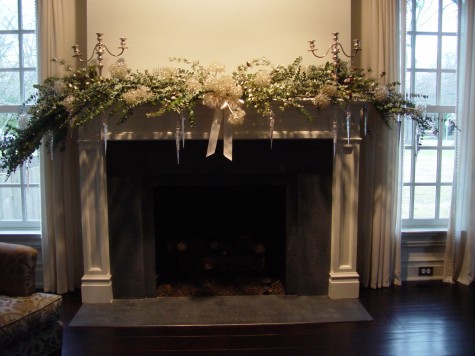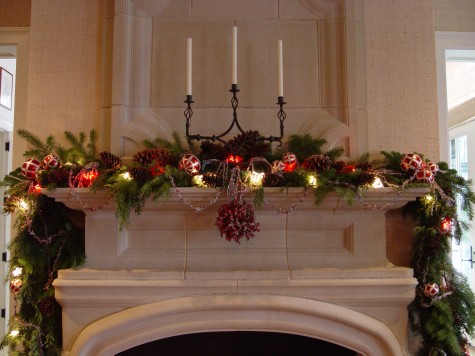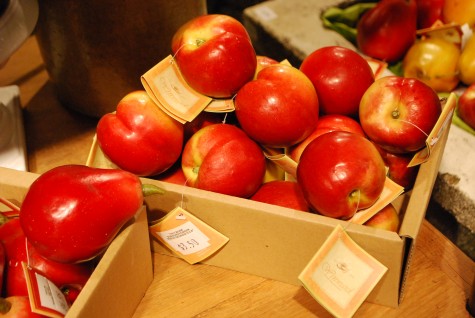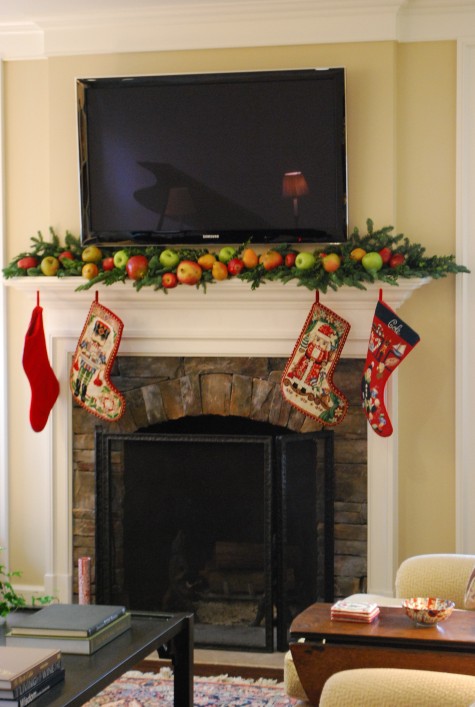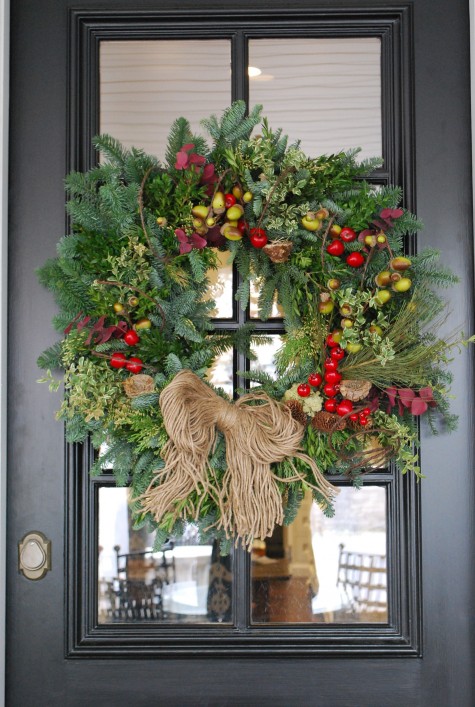 You may be bored witless with what I have had to say lately about delle robbia wreaths and faux fruits-but it appears I am still talking about them. Humor me, please. The fresh fruits-I love all of them. I relish the apples, the peaches and plums-the cherries. Watermelon-what could be better? Musk melon-delicious. The grapes-so many different kinds of grapes-from champagne grapes to green grapes-all of them taste great. Plums, apples of every different sort, an embarrassment of riches in varieties of pears-fruits taste great. But like most natural things, they also have great shapes, textures and colors. A bowl piled with fruit on the kitchen counter delights the eye, as much as the taste buds.
You may be bored witless with what I have had to say lately about delle robbia wreaths and faux fruits-but it appears I am still talking about them. Humor me, please. The fresh fruits-I love all of them. I relish the apples, the peaches and plums-the cherries. Watermelon-what could be better? Musk melon-delicious. The grapes-so many different kinds of grapes-from champagne grapes to green grapes-all of them taste great. Plums, apples of every different sort, an embarrassment of riches in varieties of pears-fruits taste great. But like most natural things, they also have great shapes, textures and colors. A bowl piled with fruit on the kitchen counter delights the eye, as much as the taste buds.
 The faux fruits enable a visual discussion about color, shape, and texture. How each fruit is placed in relation to the others, and in relation to the whole makes a composition. To compose sounds like a fairly serious activity, but it seems like what it takes to compose a letter is much like what it takes to compose a painting or a symphony. This is big talk coming from someone that has never composed so much as a melody, but there are times when the way certain things go together makes music to my eye. The pleasure I take in this is why I keep composing in one form or another, over and over.
The faux fruits enable a visual discussion about color, shape, and texture. How each fruit is placed in relation to the others, and in relation to the whole makes a composition. To compose sounds like a fairly serious activity, but it seems like what it takes to compose a letter is much like what it takes to compose a painting or a symphony. This is big talk coming from someone that has never composed so much as a melody, but there are times when the way certain things go together makes music to my eye. The pleasure I take in this is why I keep composing in one form or another, over and over. 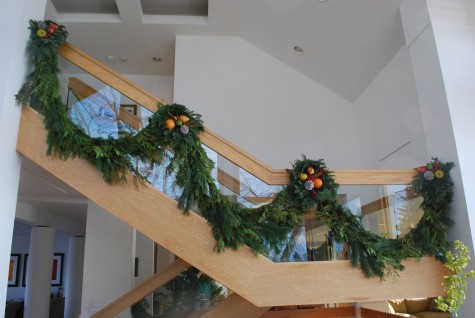 The geometry of this staircase is compellingly strong. One could decorate it for the holidays by simply repeating these rectilinear shapes. The garland could have run below and parallel to the railing. Swagging the garland introduces curvy shapes that contrast with that severe geometry. So how do I choose this composition over any other? A client who says she likes natural things for the holidays. I interpret that as not only natural materials, but a more natural way of displaying them. The mixed cedar garland is doubled up. A single strand of wired garland can have an awkwardly wired appearance. Adding the weight of a second strand permits gravity to make graceful and continuous swoops.
The geometry of this staircase is compellingly strong. One could decorate it for the holidays by simply repeating these rectilinear shapes. The garland could have run below and parallel to the railing. Swagging the garland introduces curvy shapes that contrast with that severe geometry. So how do I choose this composition over any other? A client who says she likes natural things for the holidays. I interpret that as not only natural materials, but a more natural way of displaying them. The mixed cedar garland is doubled up. A single strand of wired garland can have an awkwardly wired appearance. Adding the weight of a second strand permits gravity to make graceful and continuous swoops.

I did use some of the faux fruits in the wreath over the fireplace, but they are mixed with dry fan willow, fresh red bud pussy willow, pine cones, acorns and reindeer moss. The mixed concolor and douglas fir wreath has a strong and lively texture and color that pairs well with the stone surface. The gold bow? I usually ask a client should they see some metallic element, what would that be? This particular ribbon is a dream come true for anyone like me who has trouble composing a decent bow. A translucent and thin green organza has a feathery god stripe down the middle. The edges and center of this ribbon are all wired. Even I can poof this.
 The garland is attached to the stair rail with zip ties. We tied garland whever there was a break in the glass sides of the staircase. A branch of noble fir, wired with fruits, pine cones and cinnamon sticks covers the zip ties, and provides a little punctuation and a sense of rhythm to the change of direction.
The garland is attached to the stair rail with zip ties. We tied garland whever there was a break in the glass sides of the staircase. A branch of noble fir, wired with fruits, pine cones and cinnamon sticks covers the zip ties, and provides a little punctuation and a sense of rhythm to the change of direction.
 A family room fireplace is faced in a very beautiful stone. A pair of simple fiber pots stuffed with red twig dogwood and greens sit on either side of the hearth. The greens are done in a half round, so the pots do not intrude on the living space. Beaded coppery bronze acorns are a nod to the holiday-and to the bronzy color in the stone floor.
A family room fireplace is faced in a very beautiful stone. A pair of simple fiber pots stuffed with red twig dogwood and greens sit on either side of the hearth. The greens are done in a half round, so the pots do not intrude on the living space. Beaded coppery bronze acorns are a nod to the holiday-and to the bronzy color in the stone floor.
 The natural garland over the windows is complimented by a garland of gold and bronze oak leaves. Bronze brown glass pine cones and pine cone ornaments are an element in the composition that speaks to festive.
The natural garland over the windows is complimented by a garland of gold and bronze oak leaves. Bronze brown glass pine cones and pine cone ornaments are an element in the composition that speaks to festive.

Pam fussed at me for taking this picture before she had trimmed the bow streamers into swallow tails. The finishing touches that come after the big gestures are important. I check to be sure there is no evidence of the construction. Every element of the composition needs to be securely, but not visibly attached. The ribbon tails need to be recut. There should be no evidence I was ever there-beyond the decoration. That is a major reason why I do as much of the contruction in my studio as possible. The 14 faux fruit medallions for the staircase garlands were made at my work bench, and taken to the job, ready to be attached. Even so, there is vacuuming to be done at the end. Even when I design and install a landscape, one of my favorite moments is when the sidewalks and driveway gets washed off. Once everything is cleaned up, there is time to look over what has taken so much work to compose. By no means am I suggesting that things will not need adjusting or reworking-that is more the norm than the exception. I am suggesting that making things is satisfying and fun.




